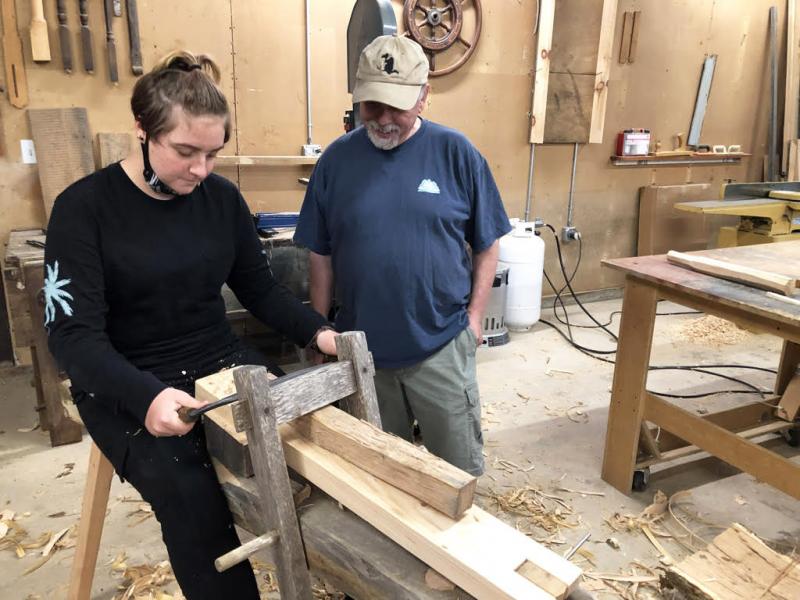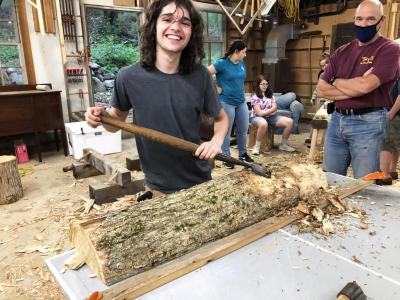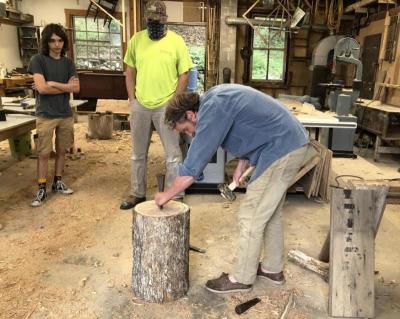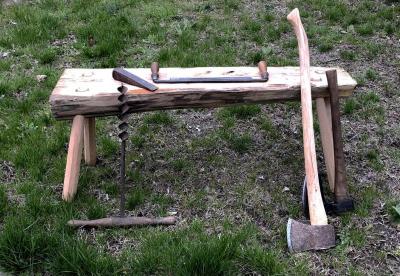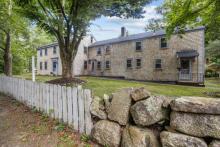Scouts help to restore Dartmouth's revolutionary past
A piece of Dartmouth’s colonial history is getting some period-appropriate furniture amid its ongoing renovations.
Throughout the spring, scouts from troops 13 and 2019 have spent their Wednesday evenings using tools of the era to create 18th century-style benches for the revolutionary era Akin House in South Dartmouth.
Wanting to have additional seating for future events on the property, Dartmouth Heritage Preservation Trust, Inc. President Diane Gilbert got in touch with the troops to see if they’d be interested in helping as a project.
“It’s a really good group,” she said. “And these were mostly girls, by the way.”
Gilbert noted that she was especially impressed with how into crafting the benches the scouts were.
“The kids were really into it,” Gilbert said.
Built in 1762 by Job Mosher, the Cape Cod style house at 762 Dartmouth St. predates the Revolutionary War — during which the British burned large parts of Dartmouth, Acushnet, New Bedford, and Fairhaven to the ground.
“It’s been around for a long time and certainly has pedigree,” Gilbert said. “This is an important witness site in history — so many events have happened since this house was built.”
The house was home to members of the Akin family for nearly 250 years before being abandoned in the early 1980s — left to rot until 2003 when preservationists found it missing floorboards and plaster peeling off the ceiling.
The house was then purchased by the Waterfront Historic Area League, Inc. of New Bedford (WHALE) through Dartmouth's Community Preservation Act Funds and the work to preserve it began. In 2007, the Dartmouth Heritage Preservation Trust, Inc. took over the property and its restoration.
Wanting to keep an authentic aesthetic with the scouts’ additions, Gilbert collaborated with preservation carpenter Nathaniel Allen on how the benches should look.
Ultimately, Allen settled on a rustic style the scouts would make entirely from hand tools and oak logs — similar to how those in colonial Dartmouth would build ships and homes.
“You’re literally starting with a raw log,” Gilbert said. “It’s a lot of work to scrape off those layers — but they had to take raw lumber and build houses back then.”
She noted that the female scouts, who fully came to every workshop, “really got the hang of” handling the tools and getting the benches done.
“They were even teaching others,” Gilbert said.
Overall, Gilbert said she has been very pleased with the scouts’ work, along with the energy and enthusiasm they’ve provided with their additions, along with having a genuine interest in the history of the Akin house.
“I felt like we were long-lost friends,” Gilbert said. “Like one of the women said, ‘You can’t have the dream without the team.’”



